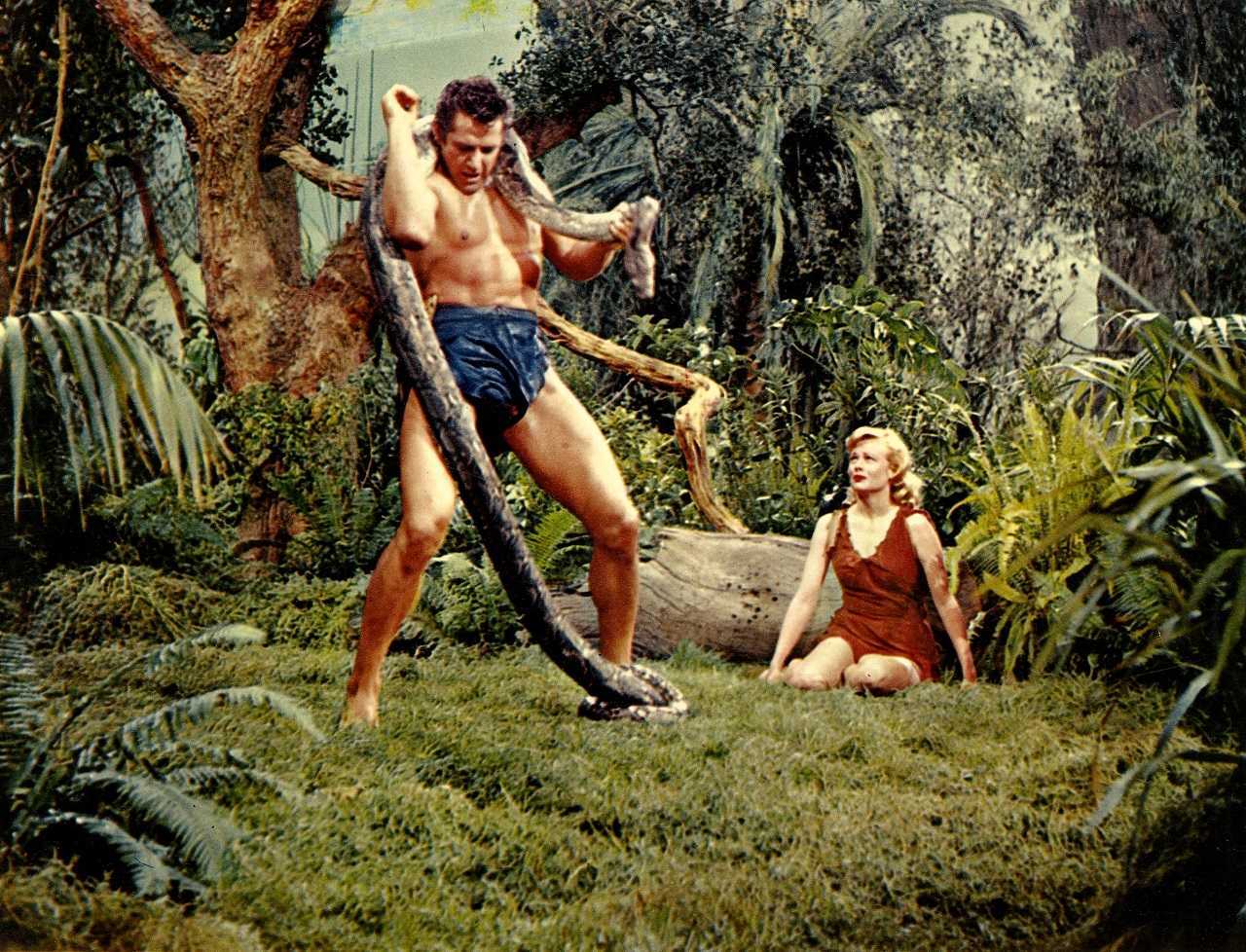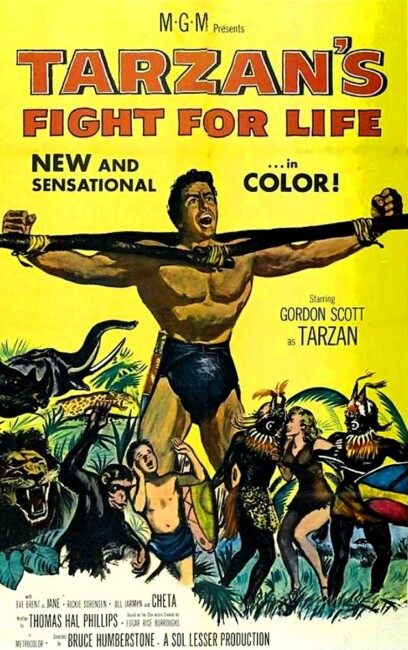Crew
Director – Bruce Humberstone, Screenplay – Thomas Hal Phillips, Producer – Sol Lesser, Photography – William Snyder, African Photography – Miki Carter, Music – Ernest Gold, Art Direction – Ernst Fegte. Production Company – Sol Lesser Productions.
Cast
Gordon Scott (Tarzan), Eve Brent (Jane), Rickie Sorenson (Tartu), James Edwards (Futah), Woody Strode (Raimo), Jill Jarmyn (Anne Sturdy), Harry Lauter (Dr Ken Warwick), Carl Benton Reid (Dr Sturdy)
Plot
Tarzan becomes involved in helping Dr Ken Warwick who is trying to establish a medical clinic in the jungle to help the natives. This is fiercely opposed by the witch doctor Futah who sees Warwick’s medicine as rival to his own control over the tribe. The warrior Raimo steals some deadly poison, thinking it is medicine, and Tarzan must face death to stop Futah administering it to his people.
Tarzan’s Fight for Life was the 22nd of the Tarzan films in the series that began with Johnny Weissmuller’s Tarzan the Ape Man (1932). By now, the Tarzan series was over a quarter of a century old and had trapped itself in a limited formula, despite having moved studio from MGM to RKO Radio Pictures and having recast the title role twice (with Lex Barker followed by Gordon Scott here) after Weissmuller’s departure.
Tarzan’s Fight for Life is no different to the preceding twenty-one films. The plot reshuffles the tired elements of superstitious tribes, calculating witch doctors, Tarzan on an urgent life-saving mission etc etc. On the other hand, Tarzan’s Fight for Life is slightly better than some of the later Weissmuller films. It was the second Tarzan film shot in colour and there is a welcome realism in its abandoning the MGM/RKO jungle backlot sets and stock footage and going to shoot on genuine African locations. Thus we see Tarzan up against hippos, riding giraffes, moving through real jungle terrain, going down real rivers and waterfalls and so on.
It was Gordon Scott’s third appearance as Tarzan and by now he is appearing a good deal more comfortable in the part than he was in earlier films. By this point, the series was comfortable enough with Scott to bring back the character of Jane, who had been retired after Maureen O’Sullivan’s departure from the role back in Tarzan’s New York Adventure (1942), fourteen films ago.

On the whole though, Tarzan’s Fight for Life is still a routine Tarzan film, boosted only by the African locations and colour photography. It is also a film undercut by an undeniable undercurrent of jingoism and racial imperialism. “These savages have no patience for your effort,” Jill Jarmyn’s nurse tells the noble Dr Warwick at one point. The underlying theme is of science winning out over superstition, in particular benevolent white medicine triumphing over native stupidity, superstitious foolishness and the natives’ being manipulated by a self-interested witch doctor. There is an intrinsic assumption in all of this that the white colonial presence is unquestionably justified and that the native Africans are superstitious and savage for not respecting its benevolence.
The other Gordon Scott Tarzan films are:- Tarzan’s Hidden Jungle (1955), Tarzan and the Lost Safari (1957), Tarzan and the Trappers (1958), Tarzan’s Greatest Adventure (1959) and Tarzan the Magnificent (1960).
This was the second of the Tarzan films for director [H.] Bruce Humbertsone who previously made Tarzan and the Trappers. Humberstone had also directed five of the Charlie Chan films and one other genre work with the Danny Kaye comedy Wonder Man (1944).


